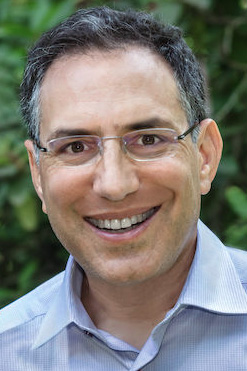

Brand Protection |
Sponsored by |

|



 My previous article on brandable domain names1 -- that is, available (unregistered) domain names which may be appealing to any entity looking to identify a potential name for a new brand launch -- focused on the use of phonotactic (i.e. 'readability') analysis techniques to identify candidate names. more
My previous article on brandable domain names1 -- that is, available (unregistered) domain names which may be appealing to any entity looking to identify a potential name for a new brand launch -- focused on the use of phonotactic (i.e. 'readability') analysis techniques to identify candidate names. more
 Conventional wisdom within the domain-sales industry states that the stock of unregistered domain names is 'running out,' with limited or no availability of short, desirable domain names across popular extensions (TLDs). This presents problems for would-be brand owners looking for a brand name (and accompanying suitable website presence) to utilize for newly-launched companies... more
Conventional wisdom within the domain-sales industry states that the stock of unregistered domain names is 'running out,' with limited or no availability of short, desirable domain names across popular extensions (TLDs). This presents problems for would-be brand owners looking for a brand name (and accompanying suitable website presence) to utilize for newly-launched companies... more
 The domain name system (DNS) is vital for businesses as it facilitates customer access to online services and resources. Strategic DNS management plays a pivotal role in cybersecurity, safeguarding against threat vectors and ensuring secure global connectivity across online channels including apps, email, websites, application programming interfaces (APIs) and more. more
The domain name system (DNS) is vital for businesses as it facilitates customer access to online services and resources. Strategic DNS management plays a pivotal role in cybersecurity, safeguarding against threat vectors and ensuring secure global connectivity across online channels including apps, email, websites, application programming interfaces (APIs) and more. more
 A recent news story, following research from security provider Infoblox, highlighted the case of the 'Revolver Rabbit' cybercriminal gang, who have registered more than half-a-million domains to be used for the distribution of information-stealing malware. The gang make use of automated algorithms to register their domains, but unlike the long, pseudo-random ('high entropy') domain names frequently associated with such tools, the Revolver Rabbit domains instead tend to consist of hyphen-separated dictionary words (presumably so as to obfuscate their true purpose), with a string of digits at the end. more
A recent news story, following research from security provider Infoblox, highlighted the case of the 'Revolver Rabbit' cybercriminal gang, who have registered more than half-a-million domains to be used for the distribution of information-stealing malware. The gang make use of automated algorithms to register their domains, but unlike the long, pseudo-random ('high entropy') domain names frequently associated with such tools, the Revolver Rabbit domains instead tend to consist of hyphen-separated dictionary words (presumably so as to obfuscate their true purpose), with a string of digits at the end. more
 In the Converse.co dispute, a three-member UDRP panel unanimously ordered the transfer of the disputed domain name to the Complainants, All Star C.V. and Converse, Inc., owners of the well-known brand CONVERSE for shoes and apparel. The panel drew the inference that the Respondent, by setting of an asking price of around $300,000 after having acquired the domain name for $306, was primarily motivated by a bad faith intent to target the Complaint. more
In the Converse.co dispute, a three-member UDRP panel unanimously ordered the transfer of the disputed domain name to the Complainants, All Star C.V. and Converse, Inc., owners of the well-known brand CONVERSE for shoes and apparel. The panel drew the inference that the Respondent, by setting of an asking price of around $300,000 after having acquired the domain name for $306, was primarily motivated by a bad faith intent to target the Complaint. more
 Domain name monitoring - that is, the detection of domains with names containing a brand-term (or other string) of interest - is a very well-established element of brand protection services. Branded domain names are of key importance to brand owners (as the basis for business-critical infrastructure (i.e. 'core' domain names), and as part of a 'tactical' portfolio of strategic and defensive registrations), but also to infringers, who can utilise domains as a means of impersonation, passing off, claimed affiliation, or traffic direction and monetisation. more
Domain name monitoring - that is, the detection of domains with names containing a brand-term (or other string) of interest - is a very well-established element of brand protection services. Branded domain names are of key importance to brand owners (as the basis for business-critical infrastructure (i.e. 'core' domain names), and as part of a 'tactical' portfolio of strategic and defensive registrations), but also to infringers, who can utilise domains as a means of impersonation, passing off, claimed affiliation, or traffic direction and monetisation. more
 Digital communications systems always represent a collection of design trade-offs. Maximizing one characteristic of a system may impair others, and various communications services may choose to optimize different performance parameters based on the intersection of these design decisions with the physical characteristics of the communications medium. more
Digital communications systems always represent a collection of design trade-offs. Maximizing one characteristic of a system may impair others, and various communications services may choose to optimize different performance parameters based on the intersection of these design decisions with the physical characteristics of the communications medium. more
 As the new-gTLD programme - the ICANN initiative to add a large number of new domain extensions (top-level domains, or TLDs) to the Internet - continues to see ongoing launches of new TLDs, we conduct a new retrospective of the activity landscape of the most recent extensions to have been launched. This new study focuses on all new-gTLDs to have entered their Sunrise or General Available periods since the start of 2023, following a previous overview by Stobbs of the full new-gTLD landscape. more
As the new-gTLD programme - the ICANN initiative to add a large number of new domain extensions (top-level domains, or TLDs) to the Internet - continues to see ongoing launches of new TLDs, we conduct a new retrospective of the activity landscape of the most recent extensions to have been launched. This new study focuses on all new-gTLDs to have entered their Sunrise or General Available periods since the start of 2023, following a previous overview by Stobbs of the full new-gTLD landscape. more
 I recently had the opportunity to speak on a podcast with Dave Bittner at CyberWire to discuss how .AI is giving cybercriminals a new avenue to take advantage of some of the largest companies in the world based on research findings from CSC's 2023 Domain Security Report. Below is a summary of the key points discussed during this podcast. more
I recently had the opportunity to speak on a podcast with Dave Bittner at CyberWire to discuss how .AI is giving cybercriminals a new avenue to take advantage of some of the largest companies in the world based on research findings from CSC's 2023 Domain Security Report. Below is a summary of the key points discussed during this podcast. more
 In the last year, the company that runs the Turkish Domain Registry has made many changes to how the extension is run. First, it has a brand new portal for registrars to interact with, liberalizing the extension .COM.TR, so registrants are no longer required to meet local presence rules, and it has launched a new dispute process to help brand holders recover domain names. more
In the last year, the company that runs the Turkish Domain Registry has made many changes to how the extension is run. First, it has a brand new portal for registrars to interact with, liberalizing the extension .COM.TR, so registrants are no longer required to meet local presence rules, and it has launched a new dispute process to help brand holders recover domain names. more
 It seems that every day, a new artificial intelligence (AI) capability emerges, posing exciting possibilities for technological advancements -- but also great potential to equal or greater risks. Cybercriminals have taken notice of this rapid surge in the popularity of AI technologies and are attempting to take advantage. more
It seems that every day, a new artificial intelligence (AI) capability emerges, posing exciting possibilities for technological advancements -- but also great potential to equal or greater risks. Cybercriminals have taken notice of this rapid surge in the popularity of AI technologies and are attempting to take advantage. more
The '.sucks Top Level Domain (TLD), by Vox Populi, which initially faced criticism from brands due to its launch fee of $2,499 is now listed on the world's largest domain registrar, GoDaddy. more
 Domain names give your intellectual property visibility, as well as provide function for your company's infrastructure. Vital domain names are simply too important to be left exposed. To protect them, you can add extra layers of security to your digital brand with easy, secure, server-level protection in addition to multi-level locks that combat domain name system (DNS) hijacking and protect against unauthorized changes and deletions to your critical domain names. more
Domain names give your intellectual property visibility, as well as provide function for your company's infrastructure. Vital domain names are simply too important to be left exposed. To protect them, you can add extra layers of security to your digital brand with easy, secure, server-level protection in addition to multi-level locks that combat domain name system (DNS) hijacking and protect against unauthorized changes and deletions to your critical domain names. more
 Companies today manage hundreds or even thousands of domain names that support their organization, their visitors from different countries, and their brands and trademarks. They register misspelling of their names as a defensive strategy to protect their brand from online fraud, or from losing traffic to simple user typos. more
Companies today manage hundreds or even thousands of domain names that support their organization, their visitors from different countries, and their brands and trademarks. They register misspelling of their names as a defensive strategy to protect their brand from online fraud, or from losing traffic to simple user typos. more
 In this article, I present an overview of a series of 'proof-of-concept' studies looking at the application of domain-name entropy as a means of clustering together related domain registrations, and serving as an input into potential metrics to determine the likely level of threat which may be posed by a domain. more
In this article, I present an overview of a series of 'proof-of-concept' studies looking at the application of domain-name entropy as a means of clustering together related domain registrations, and serving as an input into potential metrics to determine the likely level of threat which may be posed by a domain. more